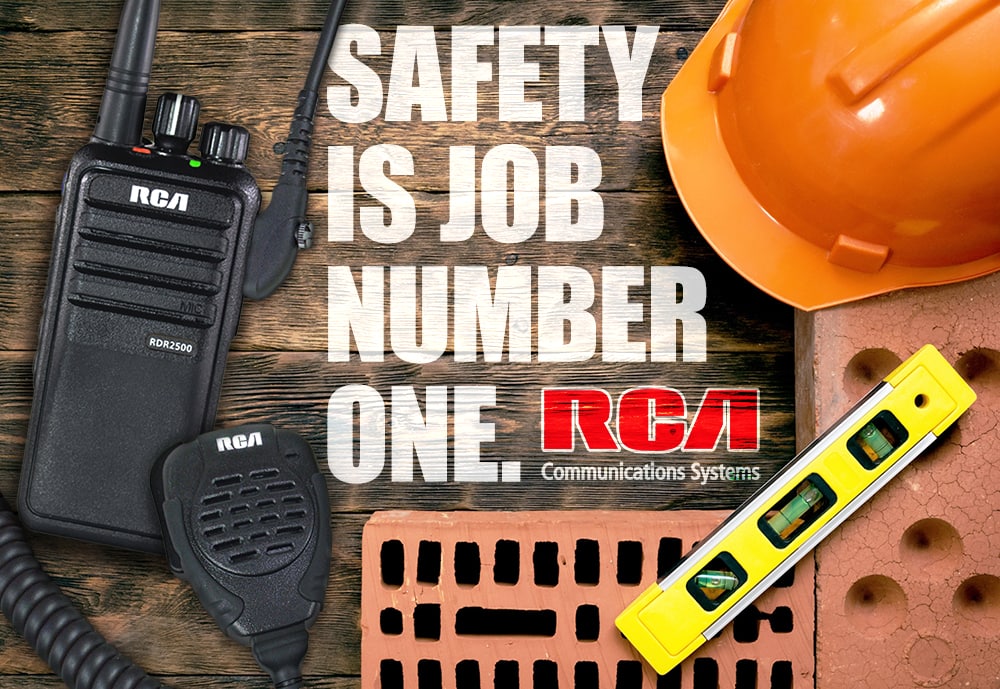
Two-way radios are designed with two primary functions in mind: improving productivity, and keeping workers safe. But considering how safety requirements can vary based on the types of jobs that people perform, this begs the question: do your customers know which radios are the best ones for their safety? Here are two-way radio safety tips we recommend sharing with them to make sure they’re getting the right models.
Tip #1: Address Hazardous Environments
Some jobs expose workers to water, gas, chemicals, and particulate matter. If you have customers who deal with these conditions, do they have radios that will be able to survive and operate correctly?
That’s where intrinsically safe models will serve them best. IS portables offer maximum protection from electrical shocks and mechanical failures in these types of environments.
A prime example is the RDR42x0 series from RCA, which includes the RDR4220, 4250, and 4280. We’ve talked before about why these are exceptional heavy-duty radios, and safety is a big reason. They’re made with military-grade technology to survive the harshest on-the-job conditions, evidenced by their IP67 rating for dust- and waterproof protection.
Tip #2: Explain Emergency Features
All radios come equipped with some type of emergency feature, often in the form of a general alert that can be sent to all members on a particular channel.
General alerts are important in a number of situations, including:
- Fires.
- Loss of power.
- Natural disasters.
- Dealing with intruders or suspicious persons.
- Coordinating relief efforts.
Beyond general alerts, there are other emergency buttons that can be preprogrammed that your customers would do well to consider. We’re referring specifically to Lone Worker and Man Down. While you’re probably familiar with these terms, your customers may not be. Sharing this information with them not only helps them decide which safety features are important to them, it also offers you the opportunity to sell specific radio models.
For example, the RDR42x0 series from RCA offers the Man Down emergency alert, while other portables don’t. This is because the models in this series are built with the sensors needed to utilize this feature: they indicate when a worker may have fallen by registering a lack of movement, or that the radio has immediately shifted sideways.
A Note About the Buddy System
We’d wager that not only have you heard of the buddy system, you’ve probably used it at some point in your life. But what you might not realize is just how effective it is. For starters, it’s been shown to improve the onboarding process for new employees.
It’s also relevant to two-way radio safety! If you have customers who operate in challenging environments, radios allow them to pair up and stay in continuous contact while they’re working. This close-knit communication leads to greater accountability, and a faster response time in the event of an accident.
Tip #3: Promote Radio Accessories
Some jobs are obviously more physical than others. But when radio communication is also essential, workers need accessories that allow them to stay in contact and have the use of both hands. More often than not, the answer is a combination of durable holsters and superior earpieces.
Holsters prevent unnecessary drops, loss, and theft.
Earpieces reduce surrounding noise so that senders and receivers can both hear each other better.
Promote these features with your customers. Don’t be like some dealers out there who want their customer radios to get damaged or need replacing — all so that they generate more money from repairs and new sales.
Tip #4: Boost Network Coverage
One of the easiest ways to help your customers with two-way radio safety is by evaluating the coverage areas of their networks. While you probably know that dead zones and static may be the result of poor battery life, there are also plenty of times where other obstacles obscure vital radio transmissions.
That’s when high-quality repeaters like the RDR9000 are needed. This RCA model is powerful and requires a third of the rack space when compared with competing lines!
The Best Options for Two-Way Radio Safety
Besides implementing these two-way radio safety tips, you also need available inventory. If you’re having difficulty getting the radios that your customers want, either due to manufacturing slowdowns or discontinued models, then you should give us a call!
RCA offers two-way radios that easily compete with those from other lines, while costing you less and shipping to you faster. Call us today at (855) 657-0090 to talk about becoming an RCA reseller.